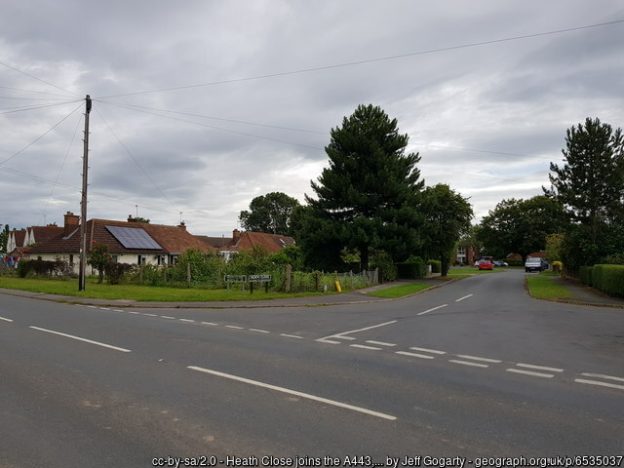(CW: sexual offences, rape)
The issue summarised
There are occasional late-medieval allegations of sexual offences – rapes in modern terminology – which include references to what appear, on the surface, to be weapons, but this talk of weapons may have been understood as a metaphorical way of referring to male genitalia. It is hard to be certain, at times, whether we are looking at an allegation of rape (modern sense) plus additional assault with an actual weapon, penetration with a weapon (probably not, but just about possible) or rape with a penis described in metaphorical weapon terms. The whole business is made more complicated by the fact that one medieval weapon was actually called a ‘ballock-hafted dagger’ or ‘ballock dagger’, because it was thought reminiscent of the obvious (the hilt – you can imagine … no, really, it’s a real thing – even mentioned in Piers Plowman …). I have written a couple of previous posts on this topic, but it’s time for another one, as I have found yet another relevant indictment.
Where I had got to with this …
In a previous post, I noted an entry on the King’s Bench plea roll for Easter 1435 relating to proceedings against a clerk, Thomas Harvy, for alleged offences in Norfolk, including a sexual offence (which was probably understood to be ‘consensual’ – at least in contemporary terms of an absence of overt physical struggle).[i] Jurors had presented before the justices of the peace that, on 1st October 1433, Thomas Harvy of Testerton, clerk, … broke into the house of John Serjeant of Colkirk, at Colkirk, and attacked Margaret, John’s wife, wounding her shamefully (turpiter) with a certain carnal lance called, in English, a ‘ballokhaftitdagher’, and so he continued to do until that day, setting a bad example etc., to John’s great damage and against John’s will.’[ii]
I did, at first, question my reading of the carnal lance/ ballokhaftitdagher’: could the lance perhaps have been some sort of butchery implement? Was the dagger just an actual dagger regarded as having a genital-like appearance? But both terms being used together made a pretty strong case for seeing the ‘carnal lance’ and ‘ballock hafted dagger’ as evoking not actual weapons but metaphorical weapons, and, given the context, to refer to male genitalia. It is worth noting that a resort to metaphorical language is unusual within the generally unfanciful context of medieval plea rolls, but that the use of weapon-imagery is a well-known practice in literary sources.[iii] Obviously, I am not a scholar of literature, and it seems to me that there is a definite need for some interdisciplinary discussion of this, but this is where I am at the moment …
I had come across the ‘carnal lance’ image on its own in a very small number of other cases.iv] Sometimes there is additional information linking the lance to specific parts of a woman’s body which appear to make a sexual penetration meaning most likely (though these might be interpreted as penetration with an actual weapon, just about). For example, a case going back to the 1440s shows a Kent jury swearing that Richard Kay, parson of the church of Hartley, on 20th November 1439, broke into and entered the house of Thomas Cotyer in Hartley, with force and arms, and, in a barn, assaulted Rose, Thomas Cotyer’s wife, beat and wounded and mistreated her, and hit her so severely with a certain carnal lance between her thighs, that she fell to the floor onto her back, and then he lay with her, against the king’s peace. They added that Richard was ‘a common adulterer etc.’[v]
A ‘carnal lance’ reference, in a 1483 Devon indictment,[vi] does seem to separate the attack with the lance and the sexual penetration, so did make me wonder once more whether I might be talking fanciful nonsense, but yet another, from the same county and roll, mentions the use in an attack on a female servant of both ‘carnal lance’ and two ‘stones’.[vii]
Another reference to carnal lances and stones, from Devon, from an indictment file for Hilary term 1482 – does, I think, confirm that carnal lances were not actual lances, and stones were not actual stones, in some legal records. It is a deeply unpleasant sexual assault accusation, in which a certain William Gamon, clerk, was accused of what would now be called a rape (though no ‘rape term’ is used, and neither are words of felony) on Joan, wife of John Stonehewer, on two separate occasions.[viii] A rough-and-ready translation of the case would be:
‘[A Devon jury on 12 October 1480] said on oath that William Gamon, [ff] recently of [Denbury], Devon, on 2nd July and 10th October 1479, with force and arms and against the peace of the lord king, with staves and knives and also a carnal lance, broke and entered the houses of John Stonehewer at Denbury and Ottery St Mary, hit John’s wife, Joan, several times, and then hit and penetrated her with the aforesaid lance and two stones hanging in the said William’s nether regions, in a certain hairy opening between her two thighs, in the rear, so that her life was despaired of and against the peace of the lord king.’
A metaphorical link between testicles and stones was certainly present in the medieval period, and appears, for example, in the Mirror of Justices, in a discussion of mayhem (Book I c. 9). It is, of course, still hard to be sure that this was not a real lance and real stones, but the more examples I find of the link between weapon-talk and sexual offence cases, the less likely that seems.
Aside from confirming the lance/stones metaphor usage, the Gamon case introduces further examples of figurative language for body parts in the sexual context. The woman’s body is discussed in particularly demeaning terms here, which is not very surprising really, but it reinforces the everyday misogyny which would have pervaded the atmosphere of medieval courts.
Recently, I came across a relevant indictment in a file from Yorkshire, from 1454. KB9/149 m. 21 contains the allegation that William Shepley of ‘Wymbursley’ (Wimberley?), Yorkshire, tailor, on 31st October 1453, came with force and arms (i.e. with swords, bows and arrows), broke the close and house of Henry Smith of Norton nr Campsall, Yorkshire, feloniously took seven marks in money, and other utensils to the value of six marks, from the goods and chattels of Henry, and (the relevant bit for me) assaulted Agnes Smith, wife of Henry, with force and arms, ‘i.e. with a large instrument of small value called a ballokhafted dagger, of length of approximately one hand and a half (longitudinis unius manip’li & di’) worth one penny, and pierced and entered her ‘secret parts’, raping the said Agnes then and there. William had been outlawed, but, thus far, I have found no further proceedings.
What exactly was the alleged offence against Agnes? There are several mutually reinforcing layers of mud here: the euphemistic reference to secreta, the well-known obscurity or breadth of raptus, the fact that there actually was a sort of dagger with that suggestive name, and the conventional lists of weaponry commonly seen in allegations of assaults or forceful wrongs, but no imagined by anyone actually to have been used.
There are new complications with this new content, relating to the ‘large instrument of small value’ line, the length cited, and the price cited.
While it is usual to include the value of a weapon or item which caused a death (because it, or its value, would be forfeit) and other items are sometimes listed with a price, in allegations of crime, I have never seen this phrase about something being ‘a large instrument of small value’. It seems an unnecessary piece of verbiage, when the price of 1d is also included. Unless it is not an actual dagger, but a penis-as-metaphorical-dagger. But then why include a price – one presumes that there would be no question of a forfeit. Unless this is either satirical, or just an unthinking, instinctive inclusion on the part of the clerk.
On the question of size of the dagger (or not-really-a-dagger), there is also room for debate. The hand, handsbreadth or ‘handful’ as a unit of measurement was certainly ‘a thing’. We know the ‘hand’ as a unit of measurement for the height of horses. There are other overlapping, if not necessarily identical concepts – the handsbreadth, the shaftment, the pes manualis.[ix] A quick, inexpert, survey suggests that these range from about 4 to 13 inches; 10 to 33 cm (so it’s related to an idea of an average – male, adult – hand, but varies in terms of how you measure it, and whether the extended thumb is included or not). This rather large range of possibilities means that, on the hypothesis that the thing being measured is not really a dagger, it is quite difficult to understand whether the ‘instrument’ is really being presented as large (implications of force, damage, perhaps?) or small (implications of ridicule). If the unit of measurement to be understood here is the 13.1 inch pes manualis, then that is on the large side (that conclusion brought to you by some rough sums and quick and possibly dubious internet information). The horse-measuring hand of 4 inches seems rather more likely (giving us an overall length of about 6 inches?). If we are actually talking about a dagger, a quick search brings up lengths of c. 13-14 inches/35-36 cm.[x] Anyway, I don’t think I can say anything very definite here, but others may be able to.
I have not gone out looking for references in a systematic way, and it seems unlikely that I have, by chance, found all of them. The best view which I can give at the moment is that this weapon/penis association was a known idiom/image in later medieval England, and an unusual, but not unknown, inclusion in legal records.
Why is this interesting, and what does it all mean?
Let us assume, for a moment, that the ‘weapons’ are metaphorical. What then?
What are the implications of this weapon imagery in the legal context? Several things occur to me, all a little tentative just now – I would certainly be interested to know what others think. Here are some of them:
- I wonder whether we can read into the occasional intrusion of this sort of imagery in entries on the legal record something of the mood of discussion about such offences, amongst the men involved in making records, or those in court. Is there validity to my intuitive reaction that it sounds like joking about and diminishing the seriousness, or the wrong, of sexual assault and rape? Might it be argued to show the exact opposite: since we know that these prosecutions almost never ‘succeeded’ in the sense of ending with a conviction and punishment according to secular law, aligning it more closely with the ‘ordinary’ sort of violence (and especially categorising the harm as a ‘wound’, as in ‘ordinary’ batteries etc.) showed a greater-than-usual degree of concern. The ‘rape: an offence (predominantly) of sex or violence?’ question is something of an ‘old chestnut’ in modern legal scholarship, but I think that there is some worth in considering linking up those debates with the work on rape/sexual offences in historical studies, which does not always deal with this point.
- What does the weapon imagery say about ideas of men, rape and sex?
- Does associating offending sex with a weapon in some sense dissociate man and penis, and, if so, is this something which serves to minimise – or ‘outsource’ – culpability?
- How does the association work with ideas/reality of rape as a weapon in (medieval) warfare?
- What does it all say about contemporary ideas of (socially sanctioned) sex? We are well used to the medieval idea of heterosexual encounters as asymmetrical, perhaps with a ‘playful’ combat aspect. Does using the weapon idea in sexual offence cases suggest an acceptance of a continuity between offending and non-offending sex?
- If weapon-imagery is to be used, what is the reason to choose one type of weapon rather than another? What implications might there be in choosing a lance rather than a dagger, a Latin/French term or an English one?
As ever with medieval legal records, far more loose ends and questions than concrete findings, but, it does seem to me that one thing the use of weapon-words must have done was to reinforce the connections between the men involved in the legal process (jurors, clerks, those in court) and place them in opposition to the woman against whom, or with regard to whose body, the offence had, allegedly, been committed. The wielding of such weapons was a thing clearly gendered male, and, as such, something drawing men together in exclusion of women. What hints might there be there about gender, law and justice? Apart from anything else, it does suggest great complexity.
GS
This version 20/09/2022
Photo by Annie Spratt on Unsplash (Going for a general idea of fog/uncertainty here – get it?)
[i] KB 27/697 Rex m.5 AALT IMG 0183. You can see a scan of the record here on the AALT website.
[ii] For the ‘ballock hafted dagger’ (a real weapon), see the earlier post, and Ole-Magne Nøttveit, ‘The Kidney Dagger as a Symbol of Masculine Identity – The Ballock Dagger in the Scandinavian Context’, Norwegian Archaeological Review 39, no. 2 (2006), 138-50.
[iii] See, e.g., D. Izdebska, ‘Metaphors of weapons and armour through time’, in W. Anderson, E. Bramwell, C. Hough, Mapping English Metaphor Through Time (Oxford, 2016), c. 14; C. Saunders, Rape and Ravishment in the Literature of Medieval England (Woodbridge, 2001), 42; R. Mazo Karras, Sexuality in Medieval Europe: Doing Unto Others, third edn, (Abingdon, 2017), 26, 151, 172; Robert Clark ‘Jousting without a lance’, in F.C. Sautman and P. Sheingorn (eds), Same Sex Love and Desire Among Women in the Middle Ages (New York, 2001), 143-77, 166. The Dictionary of Medieval Latin from British Sources (Brepols, 2018) suggests this meaning too, in its sixth variation on ‘hasta’.
[iv] KB 9/359/mm 67, 68 (these two also mention stones); AALT IMG 141 (1482). There are two on KB 9/359 m.3
[v] KB 9/293 m. 2 This also appears on the KB plea roll: KB 27/725 m. 31d; AALT IMG 567 (1442), in which Richard pleaded not guilty, but made fine, ‘in order to save everyone trouble’.[ The fine was 40s, according to the roll.
[vi] KB9/363 m. 2
[vii] KB 9/363 m.3
[viii] KB 9/359 m.2
[ix] See R.D. Connor, The weights and measures of England (1987), esp. at pp. 2, 29.
[x] I am sure somebody can do better – amateur hour. Looked at, e.g. Ballock Knife | Western European, possibly Britain | The Metropolitan Museum of Art (metmuseum.org) Ballock Dagger – Hundred Years’ War – Royal Armouries coll











